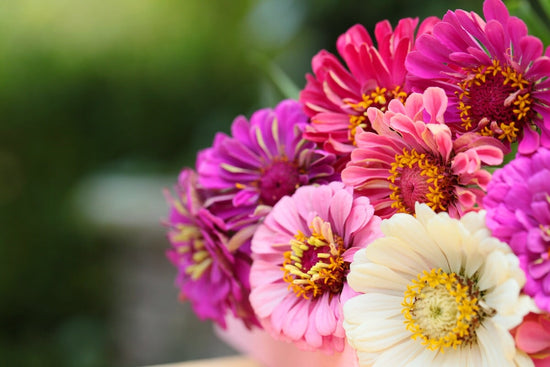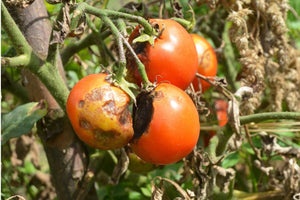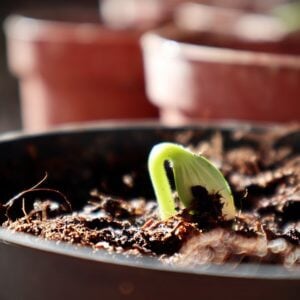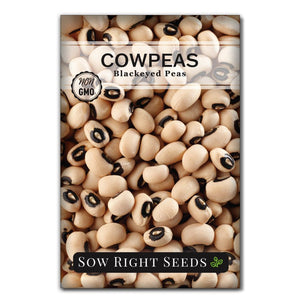How to Grow Sweet Peas - The Ultimate Cool Weather Flower
If you want to enjoy the beauty and fragrance of flowers for as many seasons as possible, add sweet peas to your garden.

Growing Sweet Pea Flowers
Sweet peas are one of the first flowers you can put outside in cooler climates. In warm growing zones, you can plant them in the fall and enjoy their fragrance all winter long.
For those who have been bundled up inside all winter, it’s rewarding to start sweet pea seeds indoors so you can put them outside right at the last spring frost. Enjoy this sweet-smelling early bloomer in your flower garden.
Everyone should grow annual sweet peas (Lathyrus odoratus) for the fragrance! I loved my grandmother’s wild patch of sweet peas that bloomed under her living room window. Every spring, they would be a tangle of pink and white across from the lavender bushes. The sweet smell was a little piece of heaven.
Sweet peas are equally at home in a cottage or cutting flower garden. Their fragrance and beautifully colored wing-shaped petals are a favorite among flower growers. Sweet peas have been cultivated since the 1700s and are an heirloom to keep passing on.
How to Grow Sweet Peas from Seed
Sweet peas are frost tolerant and appreciate cool weather. Sweet peas can be sown in the late fall in gardening zones with mild winters, and they’ll bloom through winter.
Seeds can also be sown in early spring as soon as the ground is easily worked. That means the soil is completely thawed and about 55ºF.
Otherwise, start seeds indoors 6-8 weeks before the last frost date. Soak seeds overnight or scarify the thick seed coat to improve germination rates.

Tips for fail-proof sweet pea seed germination
Soak sweet pea seeds for 24 hours and scarify them to improve germination rates. Nick the seed coat with a nail file or clippers.
Plant seeds ½ to 1 inch deep.
Soil temperature should be 55 to 65ºF.
Keep seeds moist until they germinate in 7 to 21 days.
Sweet pea seeds don’t need light to germinate, but once they sprout, they’ll need full sun or grow lights if started indoors.
Transplanting Sweet Pea Seedlings
Once sweet pea seedlings are 4 to 6 inches tall and have several true leaves, they can be planted outdoors. Hardening off indoor-grown seedlings before transplanting prepares them for outdoor life.
At this point, you can also pick out the middle tip of the plant. This will encourage more branches to grow, and you’ll end up with even more flowers.
Before transplanting, prepare the soil by adding organic material such as well-rotted compost or manure. You will want soil that retains moisture and stays cool.
Space plants 6 to 12 inches apart.

How to Grow Sweet Pea Flowers
These delightful, fragrant flowers need some simple things to reward you with blooms.
Sun
Sweet peas need full sun for an abundance of blooms. However, they are not fond of hot weather and appreciate cool soil. In warmer locations, they appreciate afternoon shade.
Soil
Give your sweet peas nutrient-rich soil that can stay cool and moist. Before planting, you can amend the soil with rich organic matter. You want the soil to retain water and not dry out too quickly. Covering the soil with a layer of mulch can help conserve moisture and keep the soil cooler.
Watering
Sweet peas need lots of water. You may want to use drip irrigation to ensure the soil stays moist. As the weather warms up, make sure you are watering often enough that the soil doesn’t dry out.
Fertilizing
Preparing the soil with compost or manure will give the sweet pea plants the nutrition they need. To encourage more blooms, add a little extra phosphorus every few weeks. Use a diluted fertilizer when the plants are still small.

Pea Trellis
Sweet peas are a vining flower and need something to grow up. Put your trellis in when you first plant sweet peas so they can grow up the supports immediately.
The plants will send out little tendrils that wrap around the support and hold themselves on. At first you may need to tie them to the support until they have enough tendrils to hold on by themselves.
There are many things you can use for a sweet pea trellis. One easy option is netting spaced between poles. This can be placed in front of a fence or a spot you want to cover with colorful flowers.
Arches and architectural pieces are also fun to cover with climbing sweet peas.
Tips for lots of sweet pea blossoms
Start off by pinching out the middle growth on the small seedlings when they are about 6 inches tall. This will encourage more branching, which will result in more flowers.
Keep up with harvesting flowers. In their weeks of prime flowering, you may need to pick every other day. This will encourage more blooms. Once they start going to seed, the plants will shut down and stop producing more flowers.
Feed your sweet peas. An application of fertilizer every few weeks can encourage more blooms.
Keep them cool. Although sweet peas like full sun, they don’t like the heat. Cover the soil with mulch to keep it moist and cool. When summer temperatures rise, you can shade the flowers in the hot afternoon. Eventually, the plants will get too hot, and it will be time to swap them out with some heat-loving plants, such as sunflowers and zinnias.
If your weather gets hot quickly, start seeds indoors so that they can go outside and have blooms sooner before they stop blooming in the hot weather.
Solutions for pests and diseases
There are some pests that love to feed on the tender, sweet pea seedlings. Watch out for rabbits, slugs, and snails.
Aphids are another garden pest to watch out for. They love to suck on these tasty plants. Use natural methods, such as a heavy spray of water, to knock them off.
Powdery mildew can be a problem in damp areas with insufficient airflow. Remove affected leaves and prune or thin out plants as needed.

Harvesting Sweet Pea Flowers
Harvesting sweet peas is one of the pleasures of growing them! You can bring their heavenly fragrance into your home.
Cut sweet pea flowers every day or every other day to keep them blooming. Cut the side branches of flowers and leave the main stem. Place stems in water as soon as you cut them.
Sweet peas don’t continue opening after they are cut, so pick stems with one or two unopened blooms. These are right at the point of having the longest vase life.
Although very fragrant, sweet pea flowers have a short vase life. They generally last 5 to 7 days after being cut. You can use floral preservatives to extend their vase life by a few days.
Sweet Pea FAQs
What is the secret to growing sweet peas?
Cool weather, moist, nutrient-rich soil, and lots of sunshine will give you beautiful, fragrant, sweet pea flowers.
Do sweet peas need a trellis?
Sweet peas are natural climbers. They send out tendrils to grab onto whatever they can find. Without a trellis, they'll grow into a tangled mess. They’re still beautiful and fragrant but not ideal.
What is the best month to plant sweet peas?
The best month to plant depends on your location and weather. Remember, they are a cool-weather plant. In zones 8 and up, you can plant from October through February. In cooler zones, wait to plant until early spring.
How long does it take to grow a sweet pea?
Sweet peas need about 50 days to mature enough to flower.
Are sweet pea flowers edible?
No. This variety of sweet peas is not edible. The seed pods that develop can be stored for planting more flowers, but don’t eat them.
Sweet peas are one of our favorite flowers for cottage gardens. This beautiful and fragrant heirloom will reward you with any attention you give it. Indulge your senses and grow sweet peas in your flower garden.
Written by Beverly Laudie







Leave a comment